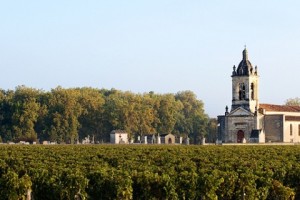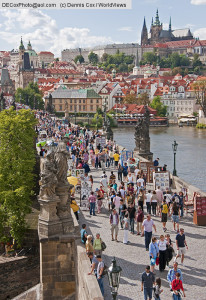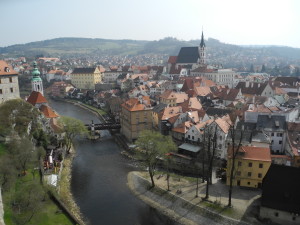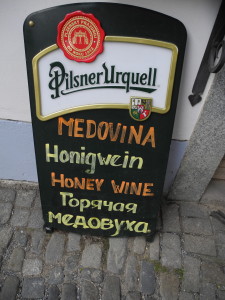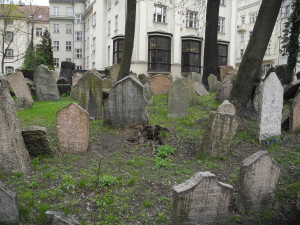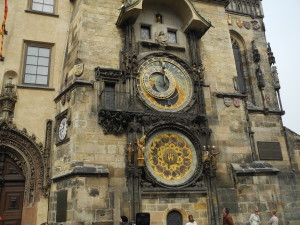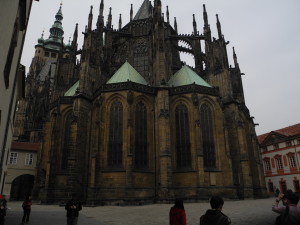Czech Republic
The much-beloved film The Sound of Music, which was released in 1965 and won the Oscar for Best Picture that year, did most of its location shooting in and around the city of Salzburg, Austria.
It’s hard to imagine many baby boomers who don’t know the (somewhat fictionalized) story of how the musically inclined von Trapps — composed of would-be-nun-turned-nanny Maria (Julie Andrews), Baron von Trapp (Christopher Plummer), and a parcel of cute kids who could belt out catchy tunes like “Do-Re-Mi” — became a family and fled the Nazis in Austria for safe haven elsewhere.
After hiking over the mountains (in the movie, at least), they eventually made their way to the United States and became known as the Trapp Family Singers.
The gorgeous Austrian scenery, the infectious music by Rodgers and Hammerstein, Julie Andrews twirling on a mountaintop in the… Continue reading
Part 2 of a 3-part series
In our last post, we began our quick guide to European cruising rivers, starting with the Danube, Rhine, Seine, and the Volga and other Russian waterways — probably the best known of the top 12 cruising rivers in Europe.
In this post, we’ll take a look at four more rivers — well, actually five rivers and one canal — ranging from France to Portugal, Germany and the Czech Republic to Sweden.
The Rivers of Bordeaux: the Dordogne, Garonne, and Gironde
You can get an intimate look at Bordeaux, perhaps the world’s premier red-wine-producing region, on this three-river cruise that begins in the city of Bordeaux itself. Bordeaux, situated along the Garonne River — which connects to the Bay of Biscay via the Gironde River along France’s western coast — is a treasure trove of architectural… Continue reading
Somehow the Czech Republic had eluded me in my travels until two weeks ago, when I was invited as a guest on an Insight Vacations tour that spent two days in Prague and one day in Cesky Krumlov, a medieval town in the southern part of the country.
If you’ve been following my previous posts, you’ll know that we toured the main attractions as well as some of the more historic beer halls and restaurants in Prague, and spent a day with overnight in Cesky Krumlov, a well-preserved “fairytale town” that “went to sleep,” as our excellent guide put it, for 300 years following Europe’s destructive Thirty Years War in the early 17th century.
Here are ten things I didn’t know about the Czech Republic before I arrived (with thanks to our Insight Vacations tour director,… Continue reading
Cesky Krumlov, a three-and-a-half-hour bus ride through country roads south of Prague in the Czech Republic, has often been described as a “fairytale” town, and it fits the description well.
As our Insight Vacations tour director, Neira Milkovic, explained en route, the town was cut off from trade routes by Europe’s destructive 30 Years War in the 17th century and “went to sleep” for about 300 years after that.
It’s now awakened as a tourist magnet, for good reason. If you want to see what European towns looked like hundreds of years ago, Cesky Krumlov — a UNESCO World Heritage Site — is a great place to do it.
It comes complete with a hilltop castle, winding cobblestone streets, a scenic river cutting an S shape through town, a central square, and — in a nod to modernity — plenty… Continue reading
When you think of European beer, Germany may spring first to mind, but the real capital is the Czech Republic.
Czechs are said to drink more brew than any other nationality in the world: 40 gallons annually for every man, woman and child in the country. I’m guessing that the average is somewhat higher than that for adult men.
The very word “pilsner” derives from the city of Pilsen in the Czech Republic, where the country’s best known export — and my longtime favorite beer, Pilsner Urquell — is brewed. It was the first golden pilsner ever made.
On my recent Insight Vacations tour of Prague, I discovered that Pilsner Urquell is only the beginning of what Czech beer has to offer.
Along with 30 other journalists from around the world, I was fortunate to join the… Continue reading
For the most part, a visit to Prague is a light-hearted affair: exploring Prague Castle, perusing Old Town Square, sauntering across the Charles Bridge, and perhaps doing some shopping for crystal or dining in a beer hall (more to come on that in a later post).
But the historical attractions are museum-quality relics of long ago, and bizarre incidents — political rivals being tossed out of windows, leading to destructive wars — are ancient history, fascinating but distant. The Habsburg dynasty — which ruled here for nearly 400 years — and the Holy Roman Empire are long gone, leaving us buildings and cathedrals to admire but perhaps less to stir our souls.
But Prague has a more recent past that should stir us to the core, and it bubbles to the surface in the city’s… Continue reading
Yesterday an associate said to me: “I can’t believe you’d never been to Prague. Everyone goes to Prague. You’re a travel writer, you’ve been to more than 100 countries.”
Point taken. And don’t think it wasn’t gnawing away at me. My daughter had been to Prague. My future daughter-in-law had been to Prague. My parents had been to Prague. And just about all the travel writers I know at least claim to have been to Prague.For years now, it’s been one of the hottest, trendiest spots on the Continent.
My excuse has been that when I was riding trains around Europe for months at a time back in the day, no Soviet bloc countries were included on Eurailpass, the rail pass I was using to get around to every country in Western Europe (except San Marino, but that’s… Continue reading
When it comes to visiting European cities, I love old.
And you’ve got to love a city where the “New Town” section dates from the 14th century.
And where a section called “Lesser Town” has more going for it than many other cities can boast in total.
Prague, capital of the Czech Republic, dates from the ninth century with the construction of Prague Castle, which is now the largest occupied castle in the world — covering 16 acres, it’s actually more like a palace — and houses the offices of the Czech president as well as the country’s crown jewels.
The castle was once the seat of power of the vast Holy Roman Empire, which ruled central Europe for a thousand years.
While some of the most beautiful parts of the castle are open only to the president,… Continue reading


